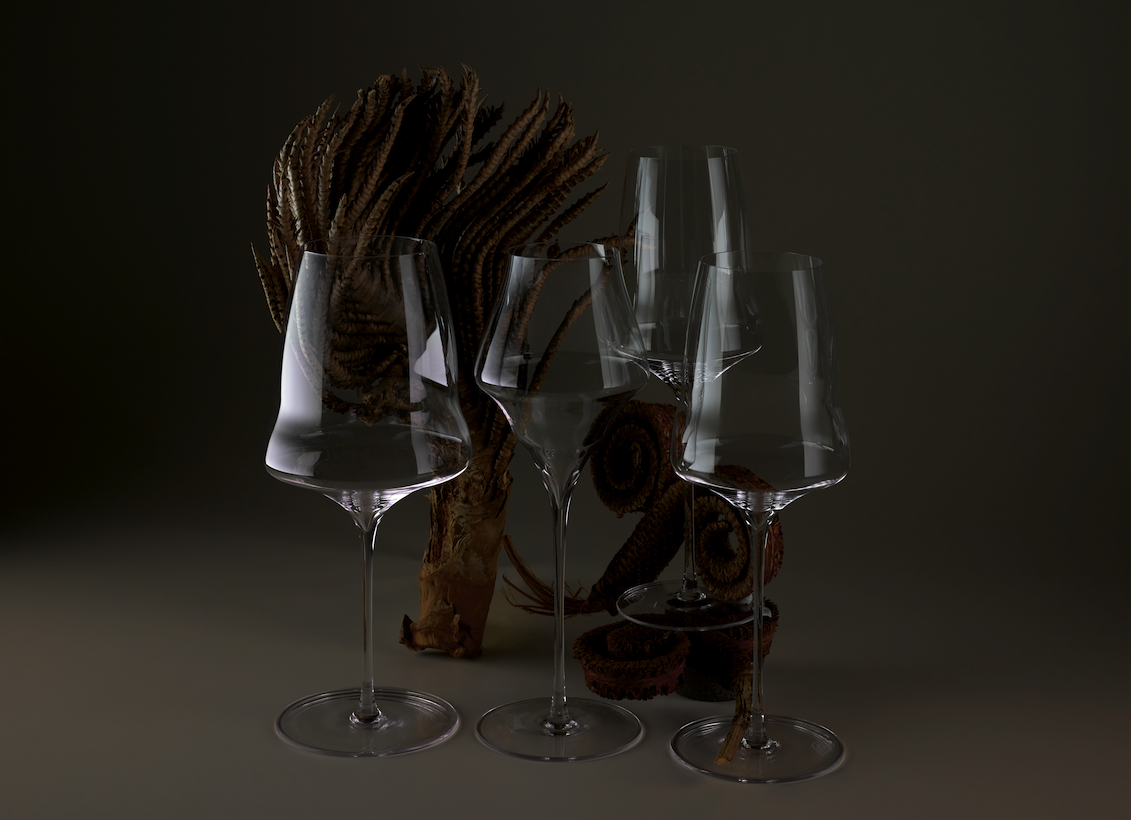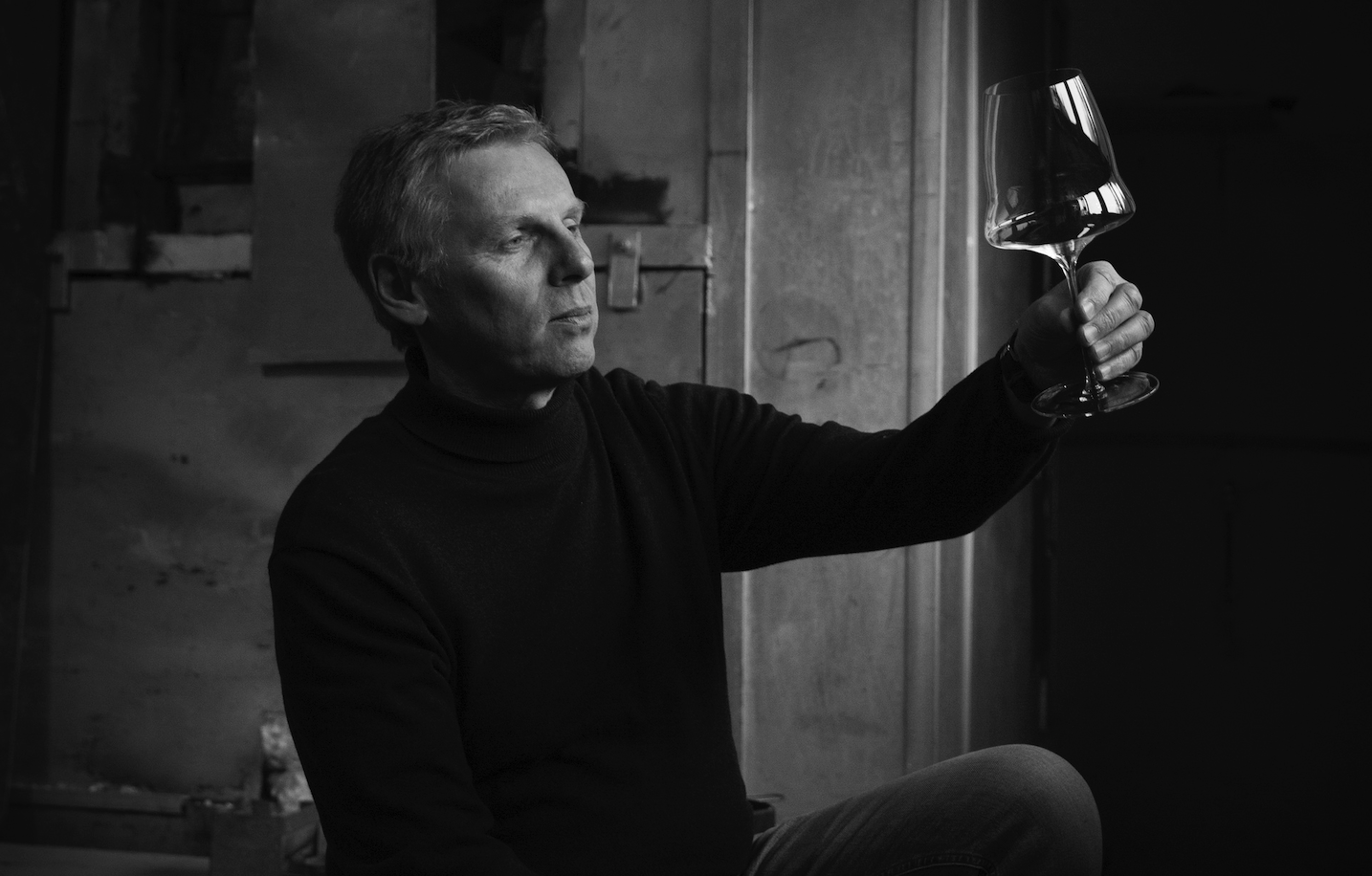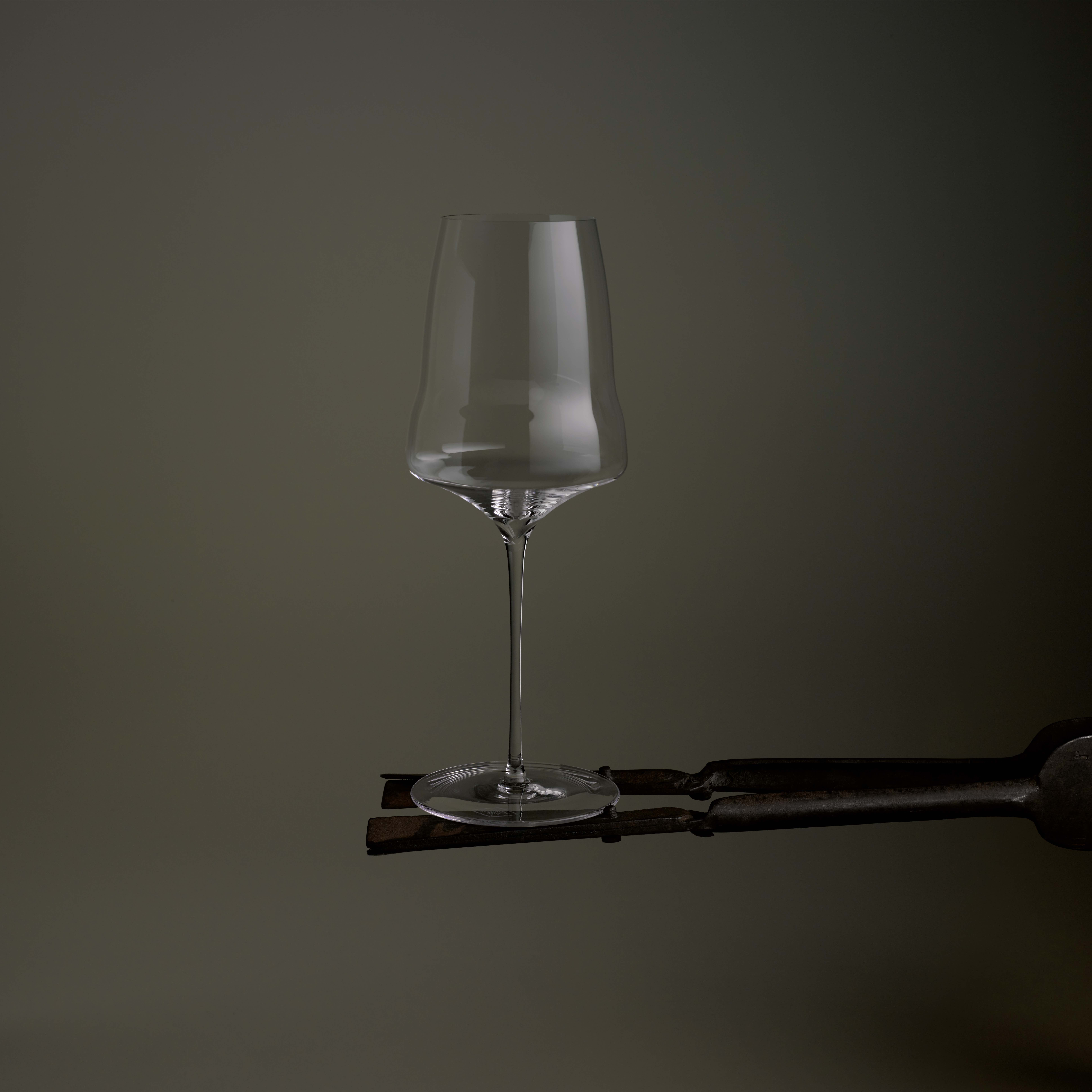
The wine glasses from the collection „Josephine“ by Josephinenhütte are the coolest I have ever seen. The Austrian glass designer Kurt Josef Zalto is the mastermind behind these stunning wine collectors items which just won the Red Dot Design Award for product design. Here he reveals the special features of these elegant glasses and how a good wine glass contributes to the enjoyment of fruit salad.

With wine, it is love at first sip, and with these wine glasses, it was palpitations at first sight. Just wow – my first thought when I stumbled upon the new collection „Josephine“. I hung on the screen for minutes, zooming in, trying to grasp the shape, following the contours and lines and just thinking: How cool would a live date be with them and a cool wine? And: How do these glasses work? Because it is clear that form also has a function. An excellent one, even. After winning the „Iconic Award: Innovative Interior,“ Josephinenhütte has now received its second award this year for its hand-blown glass collection „Josephine“: the Red Dot Design Award for product design. With around 6,000 entries, the competition, which was initiated by Professor Dr. Peter Zec, is considered one of the largest and most prestigious awards in the international design world. The coveted seal of quality is only awarded to products that demonstrate outstanding design.

Design wine glass by Josephinenhütte: Form with function
Behind this new design wine glass series hides Kurt Josef Zalto. The Austrian glass designer had already set global standards with the invention of a glass, and around 20 years later he breathes new life into the Josephinenhütte brand, known for the extravagant glass art of the 19th century, starting in 2018. For me, the actual objects of daily use are already more like fruit salad sculptures. Light, filigree and flexible – typical characteristics of the signature of the renowned glass designer. In addition, Kurt Josef Zalto has calculated the wafer-thin drinking bowl down to the last detail and provided it with a unique bend that harmoniously combines form and function. Because with his glasses he has never been concerned with pure aesthetics, but always with the optimal development of the wine. How? The carefully formed edge ensures that part of the wine that rises at the edge of the glass due to movement is broken and then flows back into the glass in a spiral movement. In this way the wine absorbs a lot of oxygen and can unfold perfectly.
He told me in an interview about the craftsmanship of these glasses and which wines he likes to drink with them. Many thanks for this!
„The glass is so fine that you almost have the feeling of holding the wine in your hand. A sensual experience.“
Kurt Josef Zalto, Glasdesigner.
What are the craftsmanship and the challenge in manufacturing these glasses?
The production of mouth-blown glass is a long process that requires great skill and experience on the part of the glassblower. First the mixture of the glass with its various ingredients is made. Then follows the melting process, in which the furnace and the glass mixture are heated and cooled to ensure that there are no bubbles or impurities.

Pre-annealing before pre-annealing: The glass mixture is produced and heated.

With sensitivity the hot, liquid glass then comes to the pit stop.
While constantly turning the blowpipe, the glassmaker skilfully blows the hot, liquid glass into the two-part beechwood mould. This creates the fine, wafer-thin goblet – the cuppa – of the wine glass. Then the stem is pulled out of the goblet with pliers and a liquid glass mass is applied, from which the base plate is made rotating with special wooden pliers. Afterwards the glass goes back into a slightly heated oven so that it can cool down very slowly. The next day the finishing of the glass begins. The blasting of the top of the cuppa, the grinding of the edge and of course the polishing of the glass – all this is done completely by hand. Any glass that does not meet the highest precision requirements and the defined feather-light weight is remelted and recycled. Depending on the furnace, 4 to 6 glassblowers are involved in the actual glass production process.

Hot round: The glass is finely ground under rotation.
„What I like about the glasses from Josephinenhütte is that they positively emphasize the benefits of a drink, like a good mirror in front of which you stand and think: ‚Oh, I look slim!‘ Nevertheless, they are balanced, the glass is definitely not a dazzler.“
Billy Wagner, Nobelhart & Schmutzig.

Why does good wine only become a pleasure with really good glasses like these?
The glass is essential to the experience of drinking wine and more important than most people think. If you taste the same wine from five different glasses, it will taste different from each glass. The surface structure of the glass determines how the glass is able to „hold“ the wine and release the aromas to the nose. The size of the surface is also very important for the intensity. The shape of the goblet is decisive. The right shape can bring harmony to the wine, open it and make the subtle difference. The wrong shape, on the other hand, simply does not tap the full potential of the wine.
A handmade, very thin and very delicate glass rounds off the wine experience. Making a good wine is hard work and involves an intense process of passion and determination. The wine deserves a glass that is capable of allowing it to shine to its full potential.
We recommend every wine lover to experiment at home and to taste their favorite wines from different glasses. It is very interesting and surprising what a difference a glass makes.
„The Josephine is brutally honest. If the wine is garbage, she will show you that too.“
Nils Lackner, Sommeliér

What fascinates you about working with glass?
The glass tradition of our family goes back to the 18th century to Veneto, Italy. In 1770, my ancestors came to Austria to the Waldviertel region as glassmakers in order to replace the glass production with potash, which was forbidden by Joseph II, with more modern techniques.
In the meantime, my family is now in the 7th generation in the glass trade and has always remained true to the Waldviertel. So my passion for glass was practically born in my cradle. Even as a 4-year-old boy I often visited my father’s glassworks. The heat of the fire, the red-hot glasses from the wooden moulds and the concentrated and precise craftsmanship of the glassblowers had a strong influence on me. I was especially fascinated by the wonderful shapes and elegant contours of the glasses and their brilliance. At the age of 11 I already started to draw my own designs and experiment with the lines of the glasses. I realized early on that I wanted to become nothing more than a glass designer.
How long does it take at the Josephinenhütte glass from the initial idea to the final product?
For decades I have been working on the perfect glass. Driven by the vision to find the original form of the wine glass. A glass that is as logical as if nature had created it. A glass that unleashes the aromas of wine better than any other. I have finally succeeded in this. I have worked for several years on the development of the „Josephine“. It is the best glass I have ever made.

Explained for beginners: How does the shape of the Josephine-glasses support which wine particularly well? Why the shape and what advantages?
The Josephine follows a fundamentally new concept. Due to the characteristic bend, the oxygen rises and is directly returned to the wine. Especially with the big, heavy wines such as Bordeaux and Burgundy, we often hear from winemakers that the wine develops faster and more intense.
And the wine tastes different. For wine professionals, but also for anyone who only drinks wine occasionally, the difference can be clearly smelled and tasted at a tasting. We love to look into the astonished faces that can’t believe that they have just mistaken the same wine from two different glasses for two different wines. Internally at Josephinenhütte we call this phenomenon the „Josephine moment! We have deliberately developed only four glasses and are firmly convinced that these four cover the complete range of all wine types. A white wine glass for young fresh wines, a red wine glass for great complex wines, a champagne glass in which both fine champagnes and young sparkling wines are shown to their best advantage.
For all those who did not want to worry about the choice of glasses, we recommend our universal glass, from which you can even drink beer. The Josephine is often called the glass with the „special bend that makes the difference in taste“. The Josephine is unique both in terms of design and taste experience, we hear this time and again from renowned winemakers and top sommeliers. This makes us very happy and drives us on.
Josephinenhütte by Kurt Josef Zalto

Each glass in the „Josephine“ collection is formed by hand as a harmonious individual piece. With their characteristic shape and expressive colors, the glassware of the Josephine Hut is designed to appeal to all the senses. Currently, the collection includes four different types of wine glasses, as well as water glasses in various colors. The glasses are now available via the online store josephinen.com/de .